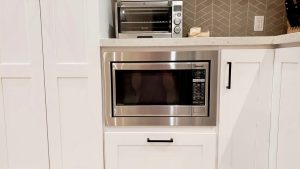Waveguides are crucial components in the transmission of microwave energy in various applications, ranging from satellite communication to radar systems. Among the essential components that ensure the efficient and safe operation of these systems are waveguide pressure windows. These components not only protect delicate internal components from environmental conditions but also ensure the integrity of the waveguide's transmission capabilities. In this detailed exploration, we focus on the protective roles and performance impacts of waveguide pressure windows, highlighting their specifications, advantages, materials, cost-effectiveness, and how they influence overall system performance.
Role and Importance
Protection Mechanism
Waveguide pressure windows serve as barriers between the internal environment of a waveguide and the external atmosphere. They prevent the ingress of moisture, dust, and other contaminants that could degrade the performance of the waveguide or damage its internal components. By maintaining a controlled environment, these windows ensure that the waveguide operates within its optimal performance parameters, thereby extending its lifespan and reducing maintenance costs.
Performance Enhancement
By design, waveguide pressure windows minimally affect the transmission of microwave signals. Manufacturers carefully select materials and design parameters to ensure that the window introduces minimal attenuation and reflection, thus preserving signal strength and quality. The precise engineering of these windows allows for their use in high-power and high-frequency applications, where signal integrity is paramount.
Specifications and Materials
Key Specifications
When selecting a waveguide pressure window, engineers consider several critical specifications:
- Frequency Range: The window must support the operational frequency of the waveguide, typically ranging from GHz to THz.
- Power Handling: High-power applications require windows that can withstand power levels without degrading. These windows can handle power up to several kW.
- VSWR (Voltage Standing Wave Ratio): A measure of how well the window matches the waveguide, typically less than 1.05:1, to ensure minimal signal reflection.
- Insertion Loss: The goal is to keep this as low as possible, generally below 0.1 dB, to ensure efficient signal transmission.
Materials
The choice of material for a waveguide pressure window is crucial for its performance and durability:
- Quartz and Borosilicate Glass: Common for broadband applications, offering low insertion loss and good power handling.
- PTFE (Polytetrafluoroethylene): Used for its excellent microwave transparency and resistance to environmental factors.
- Ceramics: Ideal for high-power applications due to their superior thermal and mechanical properties.
Cost-Effectiveness and Lifespan
The cost of waveguide pressure windows varies based on specifications, materials, and manufacturing complexity. Prices can range from a few hundred to several thousand dollars per unit, reflecting the window's ability to handle higher power levels, broader frequency ranges, and harsh environmental conditions. Despite the upfront cost, the investment in a high-quality waveguide pressure window pays off by extending the waveguide's lifespan and reducing the need for frequent replacements or repairs. Typically, a well-maintained window can last for over a decade, depending on its operational environment and frequency of use.
Advantages and Limitations
Advantages
- Enhanced System Reliability: By protecting the waveguide from environmental damage, pressure windows significantly improve system reliability and uptime.
- Improved Performance: High-quality windows minimize signal loss and distortion, enabling the system to operate at peak efficiency.
- Cost Savings: The extended lifespan and reduced maintenance requirements of waveguides equipped with pressure windows result in significant cost savings over time.
Limitations
- Cost Concerns: The initial investment might be high, especially for custom specifications or high-power applications.
- Material Constraints: The choice of material can limit the window's performance in extreme conditions, such as very high power levels or temperatures.
Conclusion
Waveguide pressure windows are indispensable components that enhance the protection and performance of waveguide systems. By choosing the right specifications and materials, engineers can ensure that these windows offer optimal performance while protecting the waveguide from environmental threats. Despite the initial cost, the long-term benefits of reliability, performance enhancement, and cost savings make these components a wise investment for any waveguide-based system.